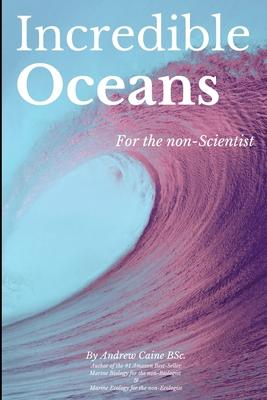
SOFT-BODIED ANIMALS - THE CNIDARIANS: jellyfish, hydroids, anemones, soft corals, stony corals.
SHELLFISH - THE MOLLUSCS: gastropods, mesogastropods, archeogastropods, neogastropods, nudibranchs (sea slugs) bivalves, cephalopods, squids, cuttlefish and octopi.
ANIMALS WITH EXOSKELETONS - THE CRUSTACEANS: decapods, crabs, lobsters and shrimps, barnacles.
ANIMALS WITH SPINY SKINS - THE ECHINODERMS: starfish, brittle stars, urchins, sea cucumbers.
CORAL REEF ARCHITECTURE: how they are made.
MARINE INVERTEBRATE TOXINS: the deadly seaweed of Hana, shellfish poisoning. Ciguatera, cone shells, sea snakes, venomous fish.
HYDROTHERMAL VENTS AND VENT BIOLOGY: the discovery, the physical environment, vent biology. MARINE ECOLOGY FOR THE NON-ECOLOGIST ECOLOGY - THE BASIC FACTS: The physical and biological environments, food chains, webs and energy flow. Random 1 - The immortal Jellyfish.
THE PHYSICAL ASPECTS THAT SHAPE THE COASTAL ENVIRONMENT: Water movement, waves, tides and currents, temperature, salinity. Random 2 - The Blue Dragon
THE ROCKY SHORE: The physical environment, high and low energy areas, zonation, the algae, the animals, behaviour, mini habitats. Random 3 - Samantha the Serpent Star.
THE MUD AND THE SAND: The shape of the shore, grain size, the sediments, sea grass, the animals. Random 4 - The Empty Sea.
WHERE RIVERS MEET THE SEA: Types of estuary, the saltwater - freshwater mix, shapes of estuaries, the animals, algae and plants. Random 5 - SAR 11, the most abundant life form in the sea.
THE SALTMARSH AND MANGROVES: Establishment, zonation, productivity, the animals' algae and plants. Random 6 - Bernadette the Deadly Yellow Boxfish.
CORAL REEFS: Distribution and limiting factors, the three reefs, formation of a coral reef, zonation, animals, algae. Random 7 - Sid the Sponge
SOFT-BODIED ANIMALS - THE CNIDARIANS: jellyfish, hydroids, anemones, soft corals, stony corals.
SHELLFISH - THE MOLLUSCS: gastropods, mesogastropods, archeogastropods, neogastropods, nudibranchs (sea slugs) bivalves, cephalopods, squids, cuttlefish and octopi.
ANIMALS WITH EXOSKELETONS - THE CRUSTACEANS: decapods, crabs, lobsters and shrimps, barnacles.
ANIMALS WITH SPINY SKINS - THE ECHINODERMS: starfish, brittle stars, urchins, sea cucumbers.
CORAL REEF ARCHITECTURE: how they are made.
MARINE INVERTEBRATE TOXINS: the deadly seaweed of Hana, shellfish poisoning. Ciguatera, cone shells, sea snakes, venomous fish.
HYDROTHERMAL VENTS AND VENT BIOLOGY: the discovery, the physical environment, vent biology. MARINE ECOLOGY FOR THE NON-ECOLOGIST ECOLOGY - THE BASIC FACTS: The physical and biological environments, food chains, webs and energy flow. Random 1 - The immortal Jellyfish.
THE PHYSICAL ASPECTS THAT SHAPE THE COASTAL ENVIRONMENT: Water movement, waves, tides and currents, temperature, salinity. Random 2 - The Blue Dragon
THE ROCKY SHORE: The physical environment, high and low energy areas, zonation, the algae, the animals, behaviour, mini habitats. Random 3 - Samantha the Serpent Star.
THE MUD AND THE SAND: The shape of the shore, grain size, the sediments, sea grass, the animals. Random 4 - The Empty Sea.
WHERE RIVERS MEET THE SEA: Types of estuary, the saltwater - freshwater mix, shapes of estuaries, the animals, algae and plants. Random 5 - SAR 11, the most abundant life form in the sea.
THE SALTMARSH AND MANGROVES: Establishment, zonation, productivity, the animals' algae and plants. Random 6 - Bernadette the Deadly Yellow Boxfish.
CORAL REEFS: Distribution and limiting factors, the three reefs, formation of a coral reef, zonation, animals, algae. Random 7 - Sid the Sponge
Paperback
$12.75